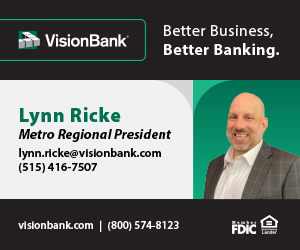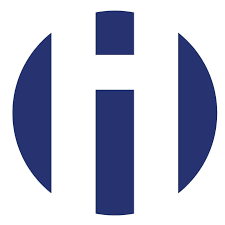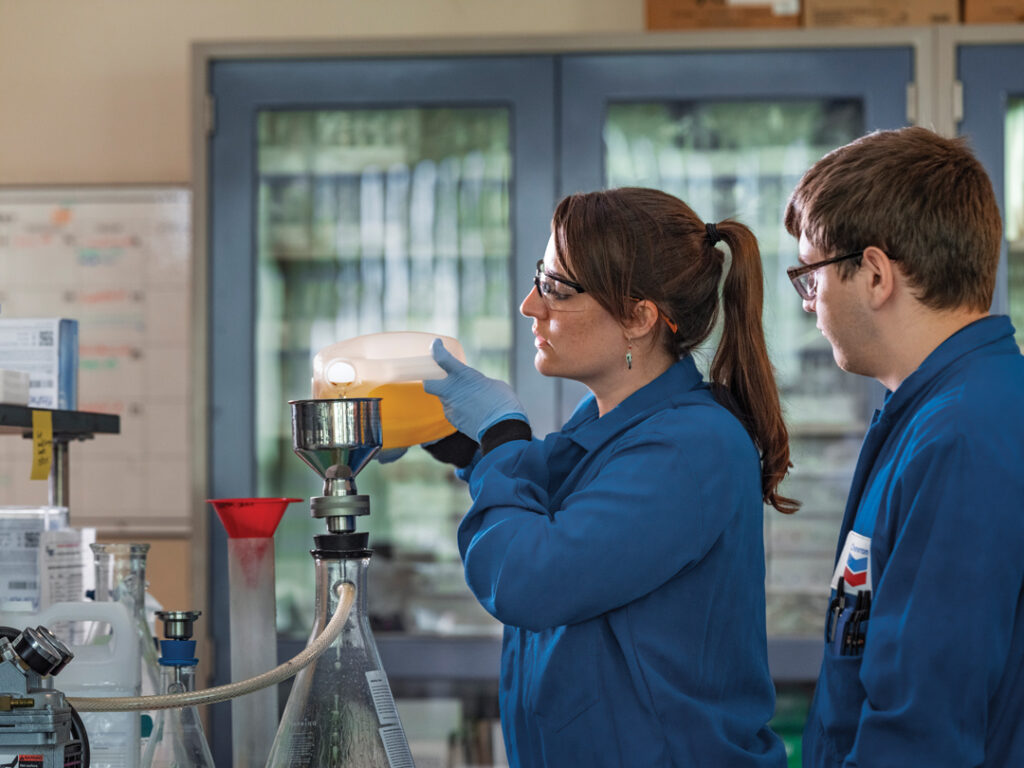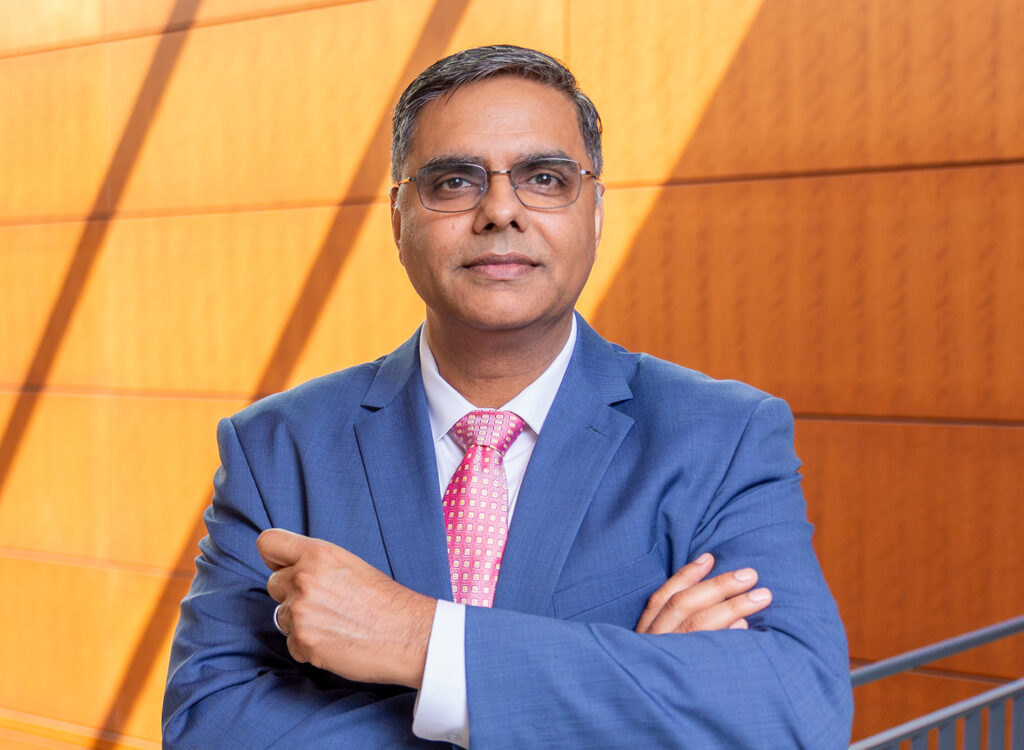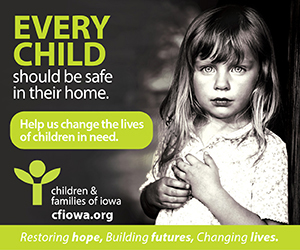Filling the gaps in money knowledge
May 5 summit to spotlight financial literacy education

Iowa high school students who plan to borrow money for college aren’t any more knowledgeable about the student loan process than their peers who don’t plan to borrow, a new study shows.
Overall, financial literacy education for teens needs far more attention than it’s getting, said Stefanie Wager, an education consultant for the state who has taught the subject.
“In general, my kids were very uncomfortable with the subject,” said Wager, who taught at Dallas Center-Grimes High School in 2012-13. “They did not have the skills that someone going into the workforce in a few years should have.”
Now, as a social studies and financial literacy consultant for the Iowa Department of Education, Wager (pronounced Wah-gur) is bringing her passion for making students smarter about money matters to a statewide level. As part of her new role, Wager is coordinating an inaugural statewide Financial Literacy Summit that will be held May 5 in Des Moines.
Gov. Terry Branstad will speak at the summit, which will feature separate seminar strands for students, educators and the general public. Jack Kosakowski, president and CEO of Junior Achievement USA, will provide a keynote address for the daylong event. One of the presenters, author Adam Carroll from West Des Moines, will present a documentary he produced, “Broke, Busted and Disgusted” – that features some Iowa students who talk about the impact that financial literacy, or lack of it, has had on them.
“We think (the summit) will have the same kind of impact the governor’s anti-bullying summit had,” said Nick Colletti, president of Junior Achievement of Central Iowa, which is a co-sponsor of the event. “We think it could have the same awareness effect.”
The idea for the summit originated from recommendations of a Financial Literacy Work Team convened last fall by Iowa Department of Education Director Brad Buck. Among the work team’s recommendations was to better communicate the resources available for financial literacy instruction.
Though financial literacy has been part of the “Iowa Core” academic standards since 2008, officials recognized there needed to be more support to districts in implementing the standards, Wager said. The summit is just the beginning of a coordinated effort to ramp up financial literacy education efforts in Iowa, she said.
“We really want to emphasize that the summit is just kind of a baby step into the idea of providing professional development and resources and other strategies for teachers so that kids have financial literacy awareness,” she said.
Within each of the summit’s three strands, the department has worked to address specific issues relevant to each audience, Wager said.
“In the student strand, for example, we’re having a session on debt decision-making, because the data we have shows that students are the worst at debt decision-making,” she said. “We really tried to take the information we had and ask, ‘What’s lacking (in their knowledge)?” During simultaneous sessions, an expert from the St. Louis Federal Reserve will talk about models that are working in other states, and educators will hear about best practices available to Iowa schools.
One of the available financial literacy programs, offered by EverFi Inc., is now used by 220 high schools across the state. The program has grown since its launch in 2010 and the online program is expected to be used by 17,000 Iowa students this school year, compared with 14,500 students last year. It’s free to schools through a statewide sponsorship by the Iowa College Student Aid Commission and the Iowa Bankers Association.
Overall knowledge about topics related to financial literacy increased by 34 percent among students using EverFi’s program, according to results from a survey of 10,000 Iowa students who have taken the courses, said Lincoln Hughes, EverFi’s schools manager for Iowa, who will speak at the summit.
“They’re also more competent and likely to exhibit healthy behaviors such as talking to an adult about financial decisions,” Hughes said.
Additionally, the survey indicates that students whose parents talk with them about their financial education tend to perform better in the EverFi course. One of the most common misconceptions of students revealed by the survey is a gap between how many students expect they’ll need to borrow for college. Fewer than half of students surveyed said they think they would have to take out student loans for college, when in fact 69 percent of students in Iowa take out loans. The results of the survey will be released in a white paper during the summit.
Wager said decisions about which financial literacy programs to use remain with the school districts, and that many districts choose from among elements of several programs such as Junior Achievement, the Council of Economic Education and others. “One of the goals of the summit is to really shine a light that there are lots of resources out there, but not necessarily to say, ‘This is the curriculum you should use,’” she said.
“Being financially literate is not a nice-to-know; it’s a need-to-know,” Wager said. “I think a lot of people sort of brush it off – I’ve had emails from people alluding to that only poor people need financial literacy education, but people from all walks of life need those tools.”
Highlights of the EverFi white paper:
– Students whose parents talk to them about money and finances are more likely to be knowledgeable and have healthy attitudes and behaviors toward money.
– Just under half of Iowa high school juniors and seniors plan to borrow money for college, but recent reports suggest that Iowa college students attending public higher education institutions or private for-profit institutions have higher rates of student loan debt, reaching up to
84 percent of graduates depending on type of institution attended.
– Students who plan to borrow money for college are not any more knowledgeable about student loans than their peers who do not plan to borrow money.
Treynor State Bank’s program could be model for other banks
In 2009, officials at Treynor State Bank developed a financial literacy program for students in the bank’s market area. Since then, the program has grown to provide financial education resources to 20 school districts in southwest Iowa. It has also facilitated annual teacher workshops for the past three years that have engaged 95 teachers from schools in western and central Iowa.
The bank provides the program through a nonprofit foundation it established, the TS Institute, which serves as a consultant and distributor of financial education resources to its local school districts.
“We did it primarily because the owners of the bank believed that the challenges faced back then were rooted in a lack of financial literacy,” said Bob Mantell, director of the TS Institute. Mantell and two other full-time bank employees essentialy work as extensions of the Treynor school system.
“It’s incredibly rewarding to work with the teachers and the students,” Mantell said. “We give them a lot of tools and expose them to a lot of financial literacy events. So when these students get to college, hopefully they have a good understanding of financial topics and don’t make a lot of the same mistakes you and I have made.”
Mantell, who served on the state financial literacy working group, will present information about his bank’s program during the Financial Literacy Summit in May. A number of financial institutions around the state have expressed interest in replicating it in their communities. “What we’re doing, though unique, may be a framework that other financial institutions may want to do,” he said.


